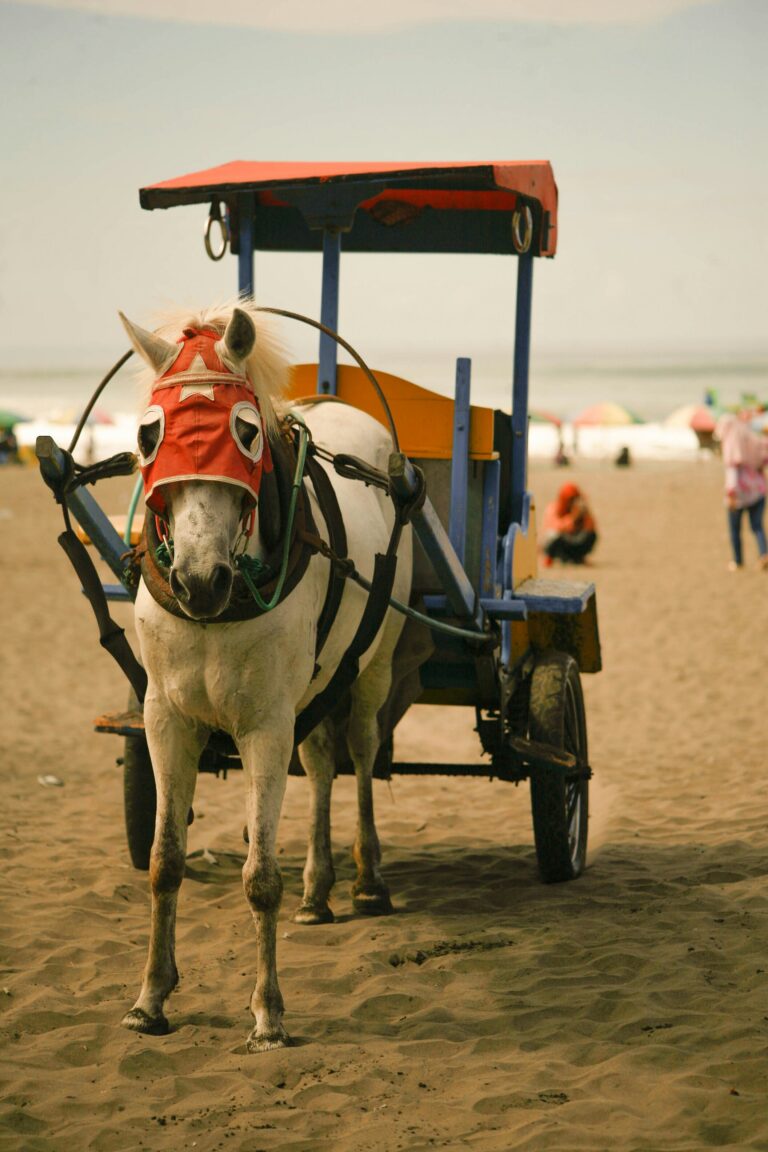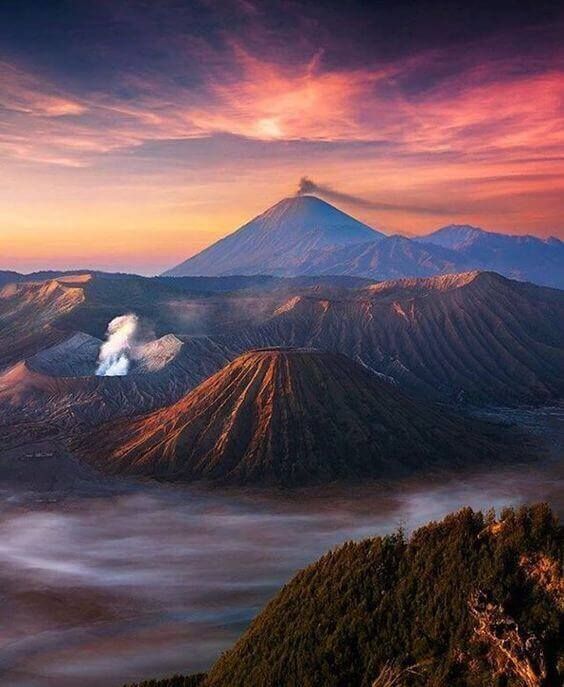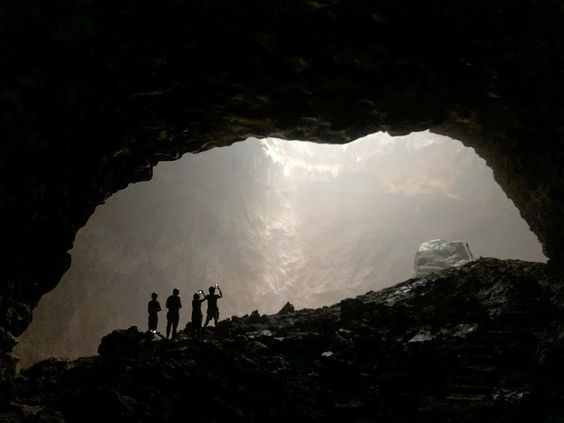Sambisari Temple is one of the fascinating historical heritages in Yogyakarta, Indonesia. Hidden underground for centuries, this temple is a silent witness to the development of culture and religion in the past. This article will examine the history, architecture and importance of Sambisari Temple in the context of Indonesia’s rich culture. Come on, take a look at the following review with Jomblang Cave Tourism!
History of Sambisari Temple

Sambisari Temple is a Hindu temple complex located in Sambisari Hamlet, Purwomartani Village, Kalasan District, Sleman Regency, Yogyakarta. It is said that this temple was founded during the time of the Ancient Mataram Kingdom, around the 9th century AD. The existence of Sambisari Temple was first discovered accidentally in 1966 by a farmer who was doing a type of work. At that time, this temple was buried in the ground to a depth of 6 meters, due to the eruption of Mount Merapi that occurred in the past. The process of selecting and restoring Sambisari Temple was carried out in stages and was finally completed in 1987.
From the results of archaeological research and discoveries, Sambisari Temple has several unique characteristics that are interesting to reveal:
- Location Characteristics: Sambisari Temple is the only Hindu temple in Yogyakarta that is sunken into the ground.
- Different Architecture: The architecture of Sambisari Temple highlights differences from other Hindu temples in Yogyakarta. This building has a square shape with three levels and is decorated with reliefs depicting Ramayana stories.
- Discovery with Other Artifacts: Apart from the temple building, the discovery of Sambisari Temple also involved various other archaeological artifacts, such as statues, phallus and yoni.
There are also several interesting facts related to Sambisari Temple:
- This temple is thought to have been founded during the reign of King Rakai Pikatan from the Ancient Mataram Kingdom.
- Sambisari Temple is dedicated to Lord Shiva, one of the main gods in Hinduism.
- The reliefs that decorate Sambisari Temple tell the stories of the Ramayana, including scenes involving main characters such as Rama, Sita, Ravana and Hanoman.
- In the past, Sambisari Temple also served as the site of a Hindu monastery.
For those who are interested in visiting Sambisari Temple, here is some practical information you need to pay attention to:
- Location: Sambisari Temple is in Sambisari Hamlet, Purwomartani Village, Kalasan District, Sleman Regency, Yogyakarta.
- Operational Hours: Sambisari Temple is open every day from 08.00 WIB to 17.00 WIB.
- Ticket Price: To be able to enjoy the beauty of Sambisari Temple, visitors will be charged an entrance ticket of IDR. 5,000,- per person.
Visiting Sambisari Temple and other tourist attractions in Yogyakarta is now very easy. You can use the Jomblang Cave Tour service to get comfort and safety while traveling with your family and loved ones.
Sambisari Temple Architecture

Sambisari Temple has distinctive and unique architecture. Located in a hole dug in the middle of a field, the temple is surrounded by three square terraces surrounding the main building. The structure of this temple is made of andesite stone which is carved with high precision. The main temple building has one main room which functions as a place of worship. This room is decorated with reliefs depicting various mythological scenes and daily life of people at that time. These reliefs are one of the characteristics that distinguish Sambisari Temple from other temples in the surrounding area.
Apart from the main building, there is also a pringgitan which is used for religious ceremonies and a holy well which is believed to have holy water and has healing properties. The entire structure of this temple reflects the beauty and strength of Javanese Hindu architecture in the past.
The architecture of Sambisari Temple displays uniqueness that is different from other Hindu temples in Yogyakarta. The following are some of the typical architectural characteristics of Sambisari Temple:
Shape and Structure:
Sambisari Temple has a square shape with three levels. The first level is the square-shaped Batur temple, decorated with reliefs depicting Ramayana stories. The second level is the body of the temple which is decorated with statues of Hindu gods and goddesses. The third level is the cube-shaped roof of the temple with kalamakara decoration.
Relief:
There are many reliefs at Sambisari Temple that tell Ramayana stories, including Rama and Sita, Ravana, and Hanuman. These reliefs are carved with fine detail and stunning beauty.
Statue:
Sambisari Temple is decorated with statues of Hindu gods and goddesses, such as Lord Shiva, Goddess Parwati, and Ganesha. These statues are made from andesite stone and carved with fine details.
Building material:
The Sambisari Temple building is made of andesite stone. These andesite stones are arranged neatly without using adhesive materials.
Uniqueness:
Sambisari Temple is the only Hindu temple in Yogyakarta which has three levels. This temple also displays reliefs that tell Ramayana stories which are different from other Hindu temples in Yogyakarta.
The following are some architectural terms that are often found in Sambisari Temple:
- Roof: The uppermost part of the temple which is generally cube shaped.
- Batur: The base of the temple which is usually square or rectangular.
- Kalamakara: A giant decoration that is usually located above the temple door.
- Temple Foot: The bottom of the temple which is often cube shaped.
- Relief: Carvings made on temple stones.
- Stupa: A bell-shaped building that is generally found at the top of a temple.
- Temple Body: The central part of the temple which is often rectangular in shape.
The importance of Sambisari Temple
Sambisari Temple has an important role in preserving Indonesia’s cultural heritage. As one of the best-preserved archaeological sites, this temple is a valuable source of information for historians and archaeologists to understand the development of Hindu-Buddhist culture and religion in Central Java.
Apart from that, Sambisari Temple is also an attractive tourist attraction for domestic and foreign tourists. This expertise in combining natural beauty with the presence of historical sites such as temples makes it a popular destination in Yogyakarta.
Tips for Visiting Sambisari Temple
For those of you who are planning to visit Sambisari Temple, here are some tips that can help you:
- Plan Your Visit: Make sure to plan your visit well, including the time and transportation you will use.
- Come in the Morning or Evening: Visit this temple in the morning or evening to avoid too hot weather and crowds of visitors.
- Wear Appropriate Clothing: Wear comfortable and modest clothing when visiting Sambisari Temple as a sign of respect for this holy place.
- Follow Guidelines and Rules: Comply with the guidelines and rules that apply in the temple area to maintain the safety and preservation of the site.
Sambisari Temple is an archaeological wonder that is a silent witness to the past. With its rich history and magnificent architecture, this temple is an inseparable part of Indonesia’s cultural heritage. Visiting Sambisari Temple is a deep and satisfying experience for anyone who wants to delve deeper into the history and beauty of Indonesia. Want to visit Sambisari temple? Come on, use Jomblang Cave Tour now!






